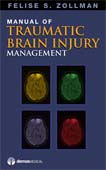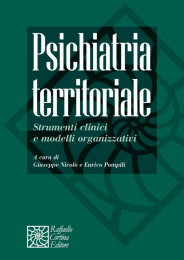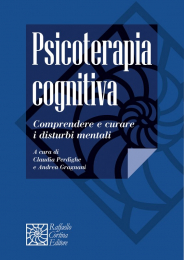Non ci sono recensioni
Pocket-sized and portable, the Manual of Traumatic Brain Injury Management provides relevant clinical information in a succinct, readily accessible format. Expert authors drawn from the fields of rehabilitation medicine, neurology, neurosurgery, neurophysiology, physical and occupational therapy, and related areas cover the range of TBI, from concussion to severe injury.
Organized to be consistent with the way TBI is managed, the book is divided into six sections and flows from initial injury through community living post-TBI, allowing clinicians to key in on specific topics quickly.
Manual of Traumatic Brain Injury Management delivers the information you need to successfully manage the full spectrum of issues, medical complications, sequelae, and rehabilitation needs of patients who have sustained any level of brain injury.
Features of Manual of Traumatic Brain Injury Management Include:
- Concise yet comprehensive: covers all aspects of TBI and its management
- A clinically-oriented, practical "how-to" manual, designed for rapid access to key information
- Organized to be consistent with the way TBI is managed
- Includes dedicated chapters on TBI in athletes and in military personnel.
- Internationally known contributors drawn from the leading TBI programs provide expert information
Introduction,Felise Zollman; Section 1: Core Concepts: Chapter 1: Traumatic Brain Injury: Definitions and Nomenclature,Kristine O'Phelan; Chapter 2: Essential concepts in Traumatic Brain Injury Neuropathology, Michelle LaPlaca; Chapter 3: Characterization of TBI Severity, Lisa Lombard; Section 2: Epidemiology and Primary Prevention; Chapter 4: Epidemiology, Marie Crandall; Chapter 5: Prevention of Sports-related Concussion and Brain Injury, Robert C. Cantu; Chapter 6: Prevention of Traumatic Brain Injury Secondary to Modes of Transportation, Falls and Assaults,Jeffrey Radecki; Section 3: Mild Traumatic Brain Injury; Chapter 7: Concussion vs. MTBI-Is There a Difference?,Grant Iverson and Rael Lange; Chapter 8: MTBI: Initial Medical Evaluation and Management,John J. Bruns; Chapter 9: Sports-Related Concussion: Identification and Return to Play Decision-making,Mark Lovell; Chapter 10: The Natural History of MTBI,Rael Lange and Grant Iverson; Chapter 11: Cumulative Effects of Repeated MTBI, Robert C. Cantu; Chapter 12: Second Impact Syndrome,Gary Goldberg; Chapter 13: Imaging in MTBI,Jeffrey Lewine; Chapter 14: Somatic Manifestations of MTBI: Headache, Dizziness and Fatigue,Elie Elovic; Chapter 15: Cognition in MTBI Nneuropsychological Assessment,Wayne Gordon and Theodore Tsaousides; Chapter 16: Cognition in MTBI: Is There a Risk of Late Development of Dementia?,William Barr; Chapter 17: Post-Concussion Disorder (PCD): Diagnostic Characteristics and Clinical Manifestation,Felise Zollman and Erica Wang; Chapter 18: Post-Concussion Disorder (PCD): Symptom Management,William Walker; Chapter 19: Confounding factors in PCD: The Role of Persistent Pain, Mood Disorder, Medication Use and Litigation in Symptom Persistence,Nathan Zasler; Chapter 20: Recognizing Post Traumatic Stress Disorder Manifesting in Patients with Traumatic Brain Injury,Eric Larson; Chapter 21: Factors Suggesting a Need for Referral to Mental Health Providers in PCD,Mike McCrea; Section 4: Moderate to Severe Traumatic Brain Injury; Chapter 22: Field Management: Pre-hospital Care,Clare L Hammel; Chapter 23: Emergency Department Management and Initial Trauma Care Considerations,Stephen Cantrill; Chapter 24: Neuroimaging,David Alexander; Chapter 24: Neurosurgical Management of Skull Fractures and Intracranial Bleeding,Joshua Rosenow; Chapter 26: The Neuro-intensive Care Unit: ICP and Cerebral Oxygenation,Sarice Bassin; Chapter 27: The Role of Neuroprotective Interventions in Traumatic Brain Injury,David Okonkwo andDavid Panczykowski; Chapter 28: Nutritional Considerations,Aaron Cook; Chapter 29: Initial Rehabilitation Interventions in the Acute Hospital Setting and Transitioning to the Next Level of Care,Brian Greenwald andKemesha Delisser; Chapter 30: Disorders of Consciousness, Brian Greenwald and Phalgun Nori; Chapter 31: The Role of Specialized Brain Injury Units in the Rehabilitation Process,Allen Brown; Chapter 32: Rehabilitation Nursing,Ann Bines; Chapter 33: Physical therapy: Mobility, Transfers and Ambulation,Catherine Burress; Chapter 34: Occupational Therapy: ADL's and Community Reintegration,Deirdre Dawson; Chapter 35: Speech Therapy: Dysphagia and Cognitive/Communication Impairments,Kara Kozub; Chapter 36: Neuro-optometric Rehabilitation,William Padula; Chapter 37: Cognitive Impairment: Characterization and Management, Eric Larson; Chapter 38: Behavioral Impairment: Recognition and Management,S. Fleminger; Chapter 39: Rational Neuropharmacology in Traumatic Brain Injury,Vani Rao andCynthia Fields; Chapter 40: Pain Management in Persons with Traumatic Brain Injury,Nathan Zasler; Chapter 41: Practical Guidelines for Prognostication after Traumatic Brain Injury,Sunil Kothari; Chapter 42: Sexuality after Traumatic Brain Injury,Angelle Sander; Chapter 43: Assessment of Decisional Capacity,Rebecca Brashler; Chapter 44: Community Reintegration,James F. Malec andAnne Moessner; Section 5: Traumatic Brain Injury-Related Medical Complications: Chapter 45: Cranial Nerve Palsies,Flora Hammond; Chapter 46: Hydrocephalus,David Long; Chapter 47: Post-traumatic Seizures,Ramon Diaz-Arrastia; Chapter 48: Heterotopic Ossification,Nora Cullen; Chapter 49: Endocrine Dysfunction,Lucy Behan; Chapter 50: Dysautonomia and PAID,Cherina Cyborski; Chapter 51: Movement Disorders, Cherina Cyborski; Chapter 52: Spasticity,Ross Zafonte; Chapter 53: Mood Disorders,Ricardo Jorge; Chapter 54: Sleep Disturbances,Felise Zollman andEric Larson; Chapter 55: Post-Traumatic Headaches,Henry Lew, Sara Cohen and Peter Hsu; Chapter 56: Neurovascular Complications,Sunil Kothairi; Section 6: Special Considerations and Traumatic Brain Injury Resources: Chapter 57: Pediatric Considerations in Traumatic Brain Injury Care,Christopher Giza and Daniel Shrey; Chapter 58: Special Considerations in Caring for the Workers' Compensation Patient,Felise Zollman; Chapter 59: Developing a Life Care Plan,Roger Weed and Debra Berens; Chapter 60: Medical-legal Considerations,Robert Hanlon; Chapter 61: Alcohol Misuse and Traumatic Brain Injury,John Corrigan; Chapter 62: Ethical Considerations,Debjani Mukherjee; Chapter 63: Special Considerations for Military Personnel: Unique Aspects of Blast Injury,Shane Mcnamee; Chapter 64: Treatment and Rehabilitation Services for Mild-to-Moderate Traumatic Brain Injury in the Military,Grant Iverson and Louis French; Chapter 65: Management of Traumatic Brain Injury in the Older Adult,David Cifu; Chapter 66: Complementary and Alternative Medicine in Traumatic Brain Injury,Felise Zollman; Chapter 67: Return to Work Following Traumatic Brain Injury,Paul Wehman, William Walker, and Shane McNamee; Chapter 68: Resources for Traumatic Brain Injury Survivors and Caregivers,Donna Zahara; Chapter 69: Living with Traumatic Brain Injury: From a Survivor's Perspective, Jennifer Field




